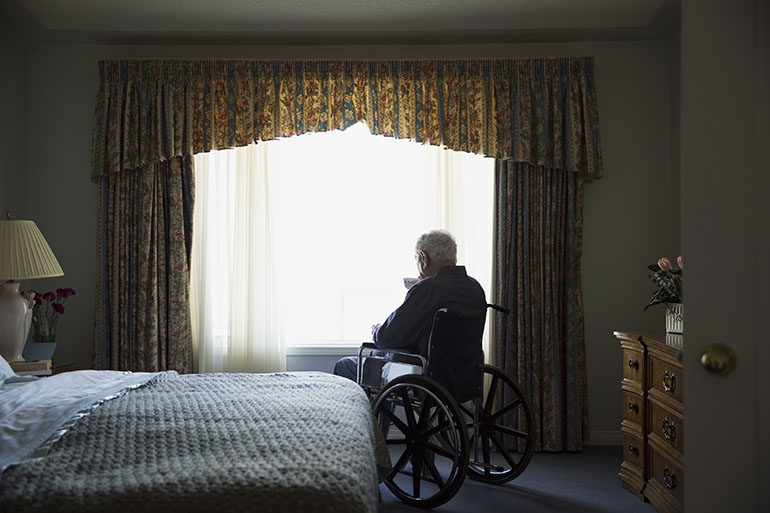As our population ages, ensuring the safety and well-being of seniors has become more crucial than ever. AI fall detection technology has emerged as a groundbreaking solution in this regard. This technology aims to prevent and manage falls among the elderly, significantly enhancing their quality of life. By leveraging artificial intelligence, this technology not only detects falls but also predicts potential incidents, thereby offering a proactive approach to fall management.
In this comprehensive article, we will delve into the various aspects of AI fall detection technology, exploring its benefits, functionality, and its role in revolutionizing senior care. We will also address some common questions and concerns surrounding its use and effectiveness.

Understanding AI Fall Detection Technology
AI fall detection technology utilizes advanced algorithms and sensors to monitor an individual’s movement and detect falls in real-time. By analyzing data from wearable devices or ambient sensors, the system can differentiate between normal activities and potential falls, thereby triggering alerts when necessary. This technology is especially beneficial for seniors living alone or in care facilities, where immediate response to falls can be life-saving.
How Does AI Fall Detection Work?
AI fall detection systems primarily rely on a combination of accelerometers, gyroscopes, and sometimes cameras to gather data about a person’s movements. These devices are either worn by the individual or installed in their living environment. The collected data is then processed using machine learning algorithms, which can identify patterns indicative of a fall. In case a fall is detected, the system sends alerts to caregivers or emergency services, ensuring timely assistance.
Benefits of AI Fall Detection Technology
- Enhanced Safety: By providing real-time fall detection and alerts, this technology significantly enhances the safety of seniors, reducing the risk of prolonged immobility after a fall.
- Peace of Mind: Family members and caregivers can have peace of mind knowing that their loved ones are being monitored continuously, even from a distance.
- Reduced Medical Costs: Early detection and intervention can prevent serious injuries, thereby reducing medical costs associated with fall-related hospitalizations.
Applications in Various Settings
The versatility of AI fall detection technology makes it suitable for various settings, including:
Home Use
For seniors living independently, AI fall detection devices provide a safety net, allowing them to maintain their independence while ensuring help is readily available if needed. Products like GPS tracking fall detection systems add an extra layer of security with location tracking capabilities.
Care Facilities
In nursing homes and assisted living facilities, integrating AI fall detection can enhance the quality of care by ensuring that staff are promptly alerted to any falls. This technology can be part of a broader fall detection system, promoting a safer environment for residents.
Healthcare Institutions
Hospitals and clinics can utilize AI fall detection technology to monitor patients, especially those at high risk of falling. This proactive approach can significantly reduce fall-related injuries and improve patient outcomes.
Challenges and Considerations
Despite its numerous benefits, AI fall detection technology also faces certain challenges:
False Alarms
One of the common issues with fall detection systems is the occurrence of false alarms. While algorithms are continuously improving, ensuring accurate detection without unnecessary alerts remains a challenge.
Privacy Concerns
With the use of sensors and cameras, privacy concerns are valid. It’s crucial to balance safety with privacy, ensuring that data is used responsibly and securely.
Technology Acceptance
Encouraging seniors to adopt new technology can be challenging. Providing adequate education and support can help in overcoming resistance and ensuring successful implementation.
The Future of AI Fall Detection
The future of AI fall detection technology is promising, with ongoing advancements in artificial intelligence and machine learning. Future developments could include more sophisticated prediction models, enhanced accuracy, and integration with other health monitoring systems to provide a comprehensive care solution for seniors.
Integration with Smart Home Technology
As smart home technology becomes more prevalent, integrating fall detection systems with smart home devices can create a seamless and automated living environment for seniors. This integration can lead to improved safety and convenience.
Personalized Fall Detection
Future systems may offer personalized fall detection, tailoring alerts and responses based on an individual’s unique risk factors and health conditions. This level of personalization could further reduce false alarms and improve the overall effectiveness of the technology.
Conclusion
AI fall detection technology represents a significant advancement in ensuring the safety and well-being of seniors. By leveraging the power of artificial intelligence, this technology not only provides real-time fall detection but also opens the door to predictive analytics and proactive care. As we continue to innovate and refine these systems, the potential for enhancing senior care and reducing fall-related incidents is immense.

Frequently Asked Questions
What is AI fall detection technology?
AI fall detection technology uses advanced sensors and algorithms to detect and alert caregivers of falls in real-time. It can be used in homes, care facilities, and healthcare institutions to enhance the safety of seniors.
How accurate is AI fall detection?
While AI fall detection systems are continually improving, they are not 100% accurate and may still experience false alarms. Ongoing advancements in algorithms aim to enhance accuracy and reliability.
Are there privacy concerns with AI fall detection?
Yes, privacy concerns exist due to the use of sensors and cameras. It is essential to ensure that data is protected and used responsibly to balance safety with privacy.
For more information on fall prevention, you can visit the Health in Aging website.
This article contains affiliate links. We may earn a commission at no extra cost to you.






